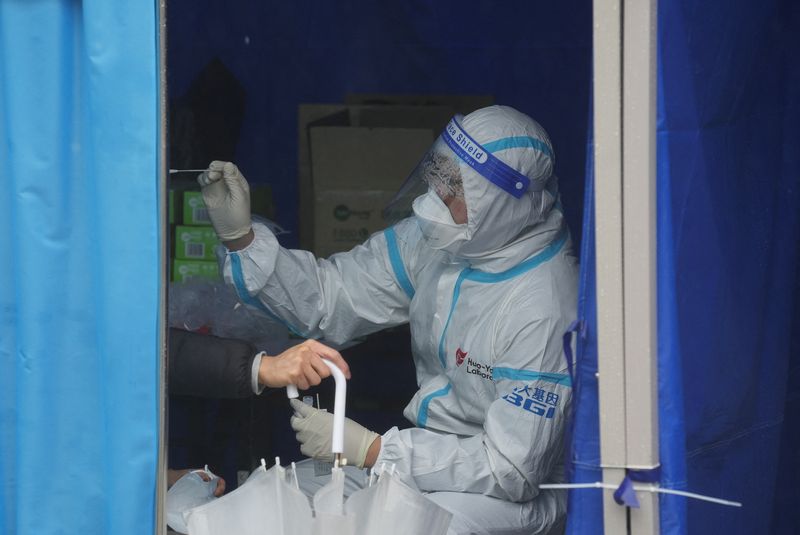Queues at funeral homes in China
2022.12.17 11:28
[ad_1]

Queues at funeral homes in China
Budrigannews.com – On Saturday, days after China relaxed strict pandemic restrictions, hearses carrying the deceased lined the driveway leading to a COVID-19 crematorium in the Chinese capital. Meanwhile, workers at a dozen funeral homes in the city were busier than usual.
The highly transmissible Omicron variant has recently affected catering and parcel delivery services in Beijing. As an increasing number of drivers and employees who have tested positive for the coronavirus call in sick, funeral homes and crematoriums in the city of 22 million are also struggling to keep up with demand.
Since December 7, when the country abruptly ended many key tenets of its zero-COVID policy, which had been championed by President Xi Jinping, in response to unprecedented public protests against the protocol, China has yet to officially report any COVID deaths.
This week, a research institute based in the United States said that China could see an increase in the number of cases and that more than a million people could die from COVID in 2023. The authorities’ efforts to realign China with a world that has largely reopened to living with the disease and move away from endless testing, lockdowns, and severe travel restrictions would be put to the test by a sharp increase in deaths.
A reporter for Reuters observed approximately 30 stationary hearses stopped in the driveway leading to the Beijing-based Dongjiao funeral home, a COVID-designated crematory.
An ambulance and a wagon with a sheet-wrapped corpse in the open trunk were parked among them. Workers wearing hazmat suits later picked up the corpse and moved it to a room where it would be prepared for cremation. Three of the various stacks surged smoked constantly.
The Reuters reporter saw about twenty yellow body bags filled with bodies on the floor in a funeral parlor a few meters from the crematorium. Reuters was unable to determine right away whether the deaths were caused by COVID.
On condition of anonymity, the parking security operator and the owner of the funeral home building’s urn shop told Reuters that the number of deaths was higher than average during this time period and was higher than the period prior to the lifting of most pandemic curbs on Dec. 7.
Staffing levels at Beijing’s roughly a dozen funeral parlors have also been impacted by sick workers.
A staff member at Miyun Funeral Home, speaking on condition of anonymity, told Reuters by phone, “We’ve fewer cars and workers now,” and added that there was a growing backlog of demand for cremation services. Numerous employees have tested positive.”
It was not promptly clear if the battle to satisfy the expanded need for incineration was likewise because of an ascent in Coronavirus related passings.
According to a staff member, a body had to be kept at Huairou Funeral Home for three days before it could be cremated.
The employee stated, “You can transport the body here yourself, it has been busy recently.”
On December 3, the Chinese health authority reported the last COVID deaths. The last fatality in the Chinese capital was reported on November 23.
However, Caixin, a well-known Chinese news outlet, reported on Friday that two veteran state media journalists had contracted COVID-19 in Beijing. This was one of the first known deaths since China eliminated the majority of its zero-COVID policies.
Caixin reported on Saturday that on December 14, a 23-year-old Sichuan medical student died of COVID.
However, the official COVID death toll of 5,235 since the pandemic began in Wuhan province at the end of 2019 remained unchanged, as reported by the National Health Commission on Saturday.
More A grenade launcher from Ukraine was subject of explosion in Poland
As cities across China prepare for their first waves of infections, China has instructed its 1.4 billion people to stay inside if they have mild symptoms since restrictions were lifted earlier this month.
According to well-known Chinese epidemiologist Wu Zunyou, 250,000 people in China would have died if the strict containment policies had been lifted earlier, say on January 3.
Wu stated that as of December 5, the proportion of COVID patients who were seriously or critically ill had decreased to 0.18 percent of reported cases, down from 3.32 percent last year and 16.47% in 2020.
Without going into specifics, he stated, this demonstrates that the disease’s fatality rate in China is gradually declining.
Since zero-COVID policies have been relaxed, less testing is being done across the country, making official figures on cases less reliable.
As of Wednesday, China has stopped publishing the number of cases without symptoms due to a lack of PCR testing among those without symptoms.
A lack of statistics regarding hospitalizations and the number of seriously ill has also sparked debate on social media regarding data disclosure. For the past ten days, there have been no officially reported COVID deaths.
“Why are these statistics not accessible? What’s happening? Are they simply not announcing them, or have they not tallied them?” On Chinese social media, one person inquired.
In response to rising COVID infections throughout China, local education authorities in Shanghai, which is more than 1,000 kilometers (620 miles) south of Beijing, instructed the majority of schools to hold classes online beginning on Monday.
Even though the theme park was still operating normally, Shanghai Disney Resort stated on Saturday that entertainment offerings may decrease as a result of a smaller workforce—a sign of staffing shortages to come.
On Saturday, few people attended one of Shanghai’s Christmas markets in the city center.








